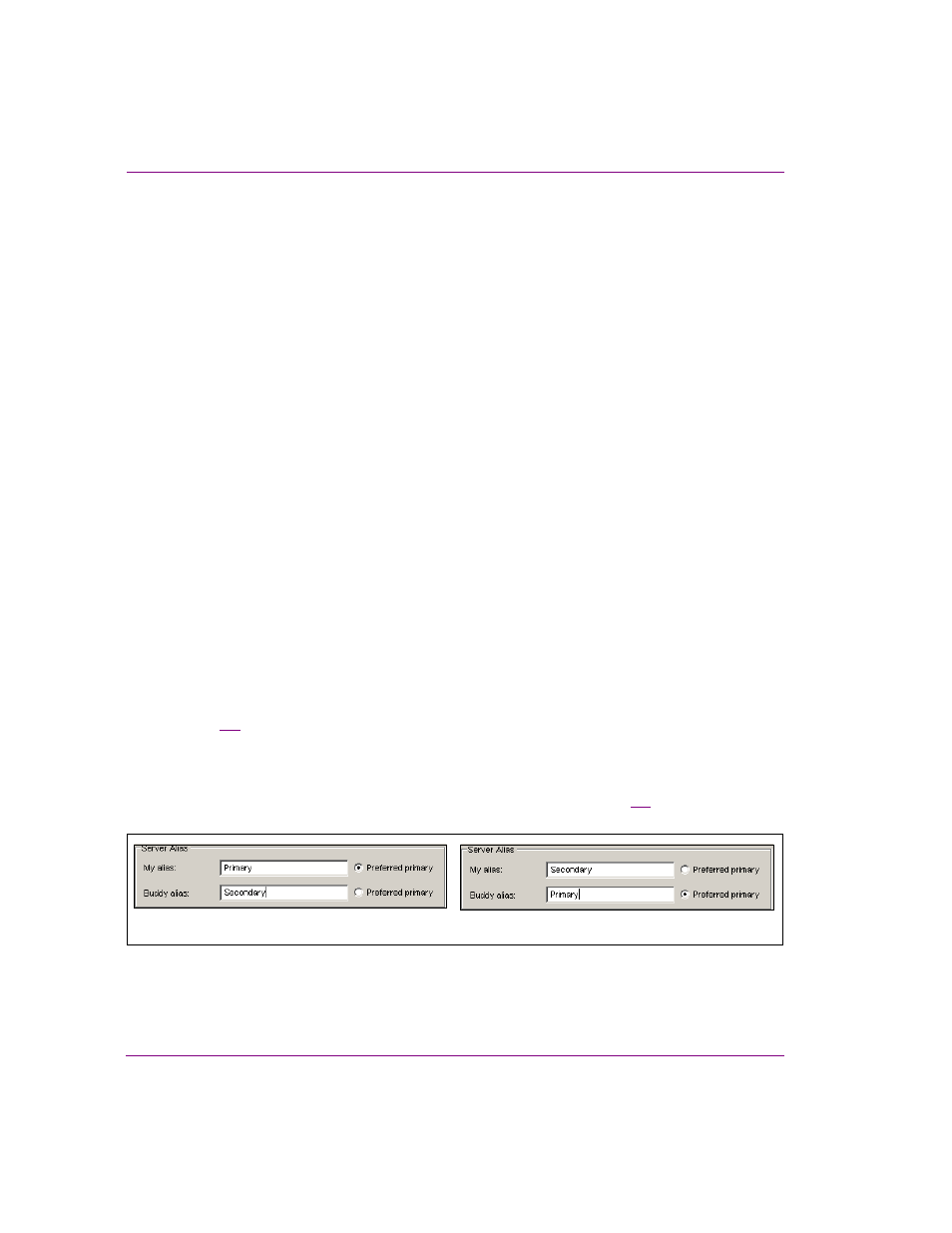Specify the buddy settings, Specify the server alias settings – Grass Valley Xmedia Server Vertigo Suite v.5.0 User Manual
Page 79

6-16
XMS Configuration Guide
Replication of the XMS Server’s database
Specify the Buddy settings
When configuring the primary server for replication, the buddy server (also known as a peer
or backup server) refers to the secondary Xmedia Server. When configuring the secondary
server, the buddy server refers to the primary Xmedia Server.
Therefore, specifying the Buddy settings is relative to which server you are currently on.
To specify the Buddy settings:
1.
Take note of the buddy server’s IP address by performing an IP Configuration on the
buddy server.
a.
On the buddy server, open the command prompt and type: ipconfig
b.
Take note of the server’s IP
ADDRESS
.
2.
Go back to the server that you are configuring. Open the Xmedia Server Control Panel
and select the R
EPLICATION
tab.
3.
Ensure that the E
NABLED
check box is selected.
4.
In the H
OST
NAME
OR
IP field, type the buddy server’s IP address (or hostname).
5.
in the XMS S
ERVER
PORT
field, type the port number that the buddy server’s
communication port. Typically, this would be 14050.
6.
Edit the R
ECONNECT
TIMEOUT
value from 0 to 3.
7.
Leave the P
UBLIC
HOST
OR
IP field blank.
8.
Click A
PPLY
.
Specify the Server Alias settings
Like the Buddy Settings, the Server Alias settings are relative to which server is currently
being configured. The S
ERVER
A
LIAS
settings are used to designate whether the current
server is the primary or the secondary server in the replication model.
Figure
demonstrates that if the current server is the primary server, you must provide it
with an alias and then assign as the primary using the P
REFERRED
P
RIMARY
radio button.
Next, you must identify the buddy server by also providing it a name. Then click A
PPLY
.
The same procedure must be performed on the secondary server’s Xmedia Server Control
Panel’s Replication page, but the settings should be inverted (see figure
).
Figure 6-8. The Server Alias settings are relative to which server is being configured
Settings on the primary server
Settings on the secondary server
